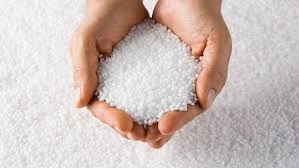Understanding Chiller Water Treatment Chemicals
Chiller water systems are crucial components in many industrial and commercial applications, responsible for maintaining optimal temperatures in buildings, manufacturing processes, and various equipment. Given the critical nature of these systems, proper water treatment is essential to ensure efficiency, reliability, and longevity. Chiller water treatment chemicals play a vital role in this maintenance, addressing several issues such as corrosion, scale formation, and biological growth.
Importance of Water Treatment
The primary function of chiller water treatment chemicals is to keep the water clean and efficient, minimizing fouling and enhancing heat transfer. Untreated water can lead to a multitude of problems, including reduced cooling efficiency, increased energy consumption, and potential system failures. Corrosion of metal components can lead to leaks and expensive repairs, while scale buildup can impede water flow and decrease heat exchange efficiency. Furthermore, the growth of microorganisms can result in biofilms, which can block flow paths and further degrade system performance.
Types of Chiller Water Treatment Chemicals
1. Corrosion Inhibitors These chemicals form protective films on the metal surfaces within the system, preventing oxidation and subsequent corrosion. Common inhibitors include phosphates, nitrites, and azoles. The choice of inhibitor often depends on the metal composition of the chiller system and the water quality.
2. Scale Inhibitors Scale formation occurs when dissolved minerals like calcium and magnesium crystallize on the surfaces in the chiller system. To combat this, scale inhibitors such as polyphosphates and phosphonates are used. These chemicals interfere with the crystallization process, keeping the minerals suspended in the water instead of allowing them to deposit on surfaces.
3. Biocides The presence of microorganisms in chiller water can lead to biofouling and other issues. Biocides, such as chlorine and isothiazolinones, are employed to control microbial growth. The selection of biocide must consider the potential impact on system components and water discharge regulations.
chiller water treatment chemicals

4. pH Adjusters Maintaining the correct pH level is crucial for effective corrosion and scale control. Chemicals like sodium hydroxide or sulfuric acid are often used to raise or lower the pH, ensuring that it remains within the optimal range.
5. Flocculants and Coagulants These chemicals help in removing suspended particles from the water, which can contribute to fouling. Flocculants agglomerate small particles into larger clusters, making it easier for them to be filtered out of the system.
Best Practices for Water Treatment
Implementing an effective water treatment program involves not only selecting the right chemicals but also monitoring their performance regularly. Testing water quality parameters such as pH, alkalinity, conductivity, and levels of specific ions is essential to ensure the treatment chemicals are working effectively. Additionally, regular cleaning and maintenance of the chiller system can help to mitigate the buildup of deposits and minimize the impact of corrosion.
Furthermore, it’s advisable to consult with water treatment specialists who can tailor a treatment program to the specific needs of the chiller system. This can lead to significant savings in energy costs and extend the lifespan of the equipment.
Conclusion
Chiller water treatment is a critical aspect of maintaining an efficient cooling system. By utilizing the appropriate chiller water treatment chemicals—such as corrosion inhibitors, scale inhibitors, biocides, pH adjusters, and flocculants—operators can enhance the performance and reliability of their systems. Regular monitoring and adjustments to the treatment regimen ensure that the systems remain in peak condition, preventing costly downtime and repairs. As industries evolve, so too does the importance of effective water treatment in preserving the integrity and efficiency of cooling systems.

